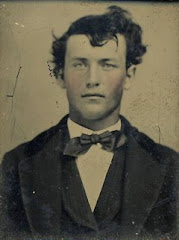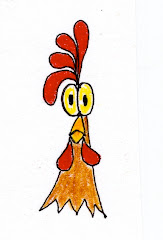================
In my previous blog essay I told you about how George Washington was an innovative and inventive farmer, and that he parted ways with many of the usual farming practices of his day. For example, instead of relying exclusively on tobacco as a cash crop, he opted to grow grains and corn. He also had livestock and a fishery. Washington’s diversified and sustainable approach to farming contributed to his considerable prosperity. But there was another important facet of his operation that was integral to his success...Washington understood that in order to get the most money from his crops he needed to add value and sell to local markets.
Now, some 200+ years later, small farmers in America are realizing that, in order to survive and thrive, they must add value to the basic agricultural commodities their farms produce, and they must sell direct to local markets. It would seem that the more things change, the more they stay the same.
From what I’ve been able to learn of George Washington’s farm, he added value (and profit) to his farm production in two notable ways. First, when he inherited Mount Vernon from his half brother Lawrence in 1754, there was a small grist mill that ground corn and wheat for neighboring farmers and to supply the needs of Mount Vernon’s community.
That, in itself, was a profit center, but in 1771 Washington constructed a larger, “merchant” grist mill. The new mill was powered by a 16ft water wheel that turned two sets of stones. There was also a newly patented mechanism for sifting and separating white flour from the germ and bran. One set of stones was for corn. The other stones were imported from Europe and employed to grind wheat. Here’s a picture I took of the inside of the reconstructed grist mill. The gears and mechanisms are almost entirely made of wood:

Washington’s mill produced a fine flour that was sold all along the eastern seaboard colonies. He also packed the flour in barrels and shipped it to foreign markets, where it was much in demand.
But milling flour was just the beginning of a much more ambitious value-added venture. Off to one side of the grist mill Washington constructed a distillery for making whiskey. The process of making whiskey involved fermenting a heated mash of ground indian corn, rye, and malted barley, all of which came from Washington’s farm. The distillery also produced fruit brandies.
You can visit the reconstructed distillery today. Here is a link. The building has five stills. It was the largest distillery in America at that time. Production was a much as 11,000 gallons a year.
Prior to the Revolutionary War, rum was the most popular distilled alcoholic drink in America. But after the war, rum and molasses (used to make rum) from British Caribbean islands was in short supply. So homegrown corn-and-rye whiskey filled the void. Washington had no problem selling his whiskey to local markets.
Here is a picture I took from the outside of Washington’s distillery:

That wood sluice you can see in the picture supplied a steady stream of cooling water to the wooden barrels in which the copper condensation coils of each still were immersed.
During our tour of Mount Vernon, we learned that Washington himself preferred to drink imported Port and Madeira wines which, I’m told, are sweet to the taste (I’m not an experienced alcohol imbiber myself). But an inventory of his estate after he died in 1799 showed that Washington had an ample supply of brandy and whiskey in the basement of Mount Vernon. Clearly, he had no objection to the drinking of alcohol. But, from what we learned, he strongly disapproved of drinking to excess.
Another interesting aspect of Washington’s distillery operation was that the huge quantities of spent mash were not wasted. The byproduct was fed to hogs and cattle, which were penned outside the distillery. One visitor wrote that Washington’s hogs were so fat their bellies dragged on the ground.
George Washington’s farming and “agripreneurial” pursuits made him a lot of money. He was a very wealthy man when he died. This was not the case with the 3rd, 4th, and 5th presidents of the U.S., who were also Virginian farmers. I’ll have more to say about these men in my next few essays.
================
To read the next story in this series, Click Here: Visiting Madison's Montpelier & The Big Woods
================
























































































































6 comments:
the irony to me is that "industrial" buildings of that era, are more attractive than most peoples houses are today. I've often been amazed at how such ordinarily ignored buildings like outhouses, were often wonderfully crafted on some of these old houses. People sure built like they meant it to last.
Let me get this straight. Washington designed and built his own threshing barn, expanded and enlarged his grain mill, and opened his own distillery.
Did he have permission to do any of that? I hope he pulled the necessary building permits from the local zoning boards. And used licensed contractors. Was he even an architect? He's lucky that barn didn't collapse! What about the whiskey? How could any of his customers be sure it wasn't adulterated - it doesn't sound like it was marketed by the State of Virginia's Liquor Control Commission.
If you ask me, Mount Vernon was just a mass of health code, zoning and tax violations. I don't even want to think about the unpasteurized milk and dairy products. And he probably slaughtered the cattle and pigs in an open-air facility! And the breads - were they baked in an oven that also handled nuts? Did he warn his customers about that danger?
It's a darn good thing that he's not around today, endangering the public with his reckless disregard for public safety.
/end sarcasm
Robert, have you ever considered a career change? The NEA is always on the lookout for writers of history text books for use in public schools.
Steve: I work for the State of Michigan, so I'm well versed in the "proper" language.
I find it a bit depressing that Washington would no longer be allowed to do any of those things. He's probably rolling over in his grave, watching us trade our freedom and liberty for Medicare Part D and Social Security benefits.
I thought the same thing of Washington's mill and distillery. Small, home-based enterprises like that (or even smaller) are almost impossible to get off the ground with the layers of oppressive government regulations we have today. The founders of our country would surely be disappointed with what has happened to the nation they gave us.
one interesting thing about Washington's distillery is that he did pay taxes on the whiskey he made.
Robert, I almost lost my (Virginia!) wine laughing at that comment. As a native Michigander, though...lol...
Thank you to Herrick for posting this, it was fascinating! Some things I didn't know about The General. (Rolled in researching the barn for a couple of photographs I took of it, and hope you don't mind my linking to these posts on Flickr for others who wish to learn!)
Post a Comment